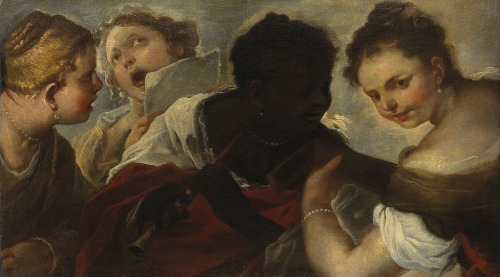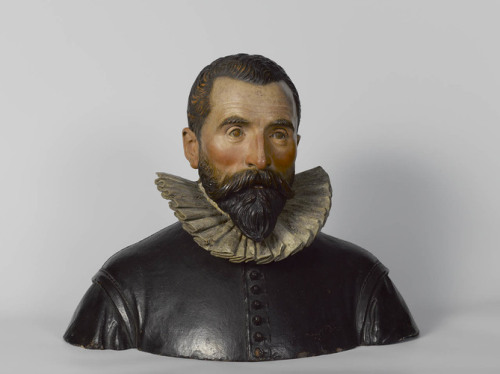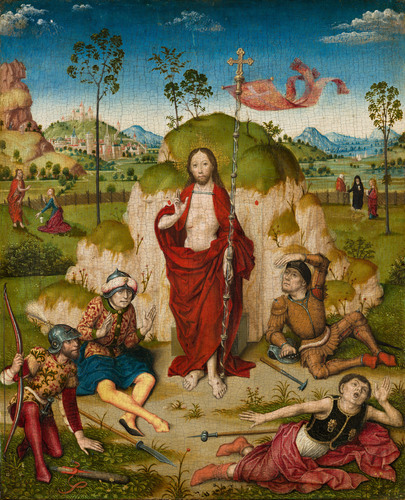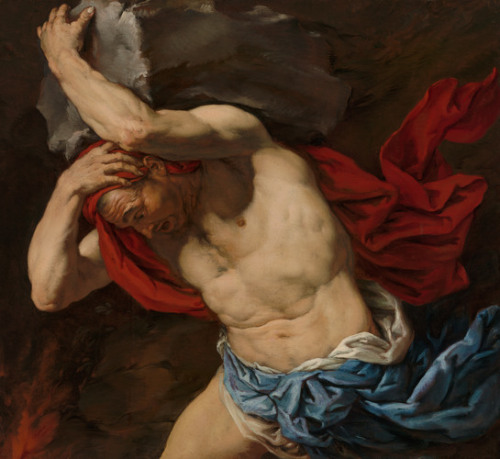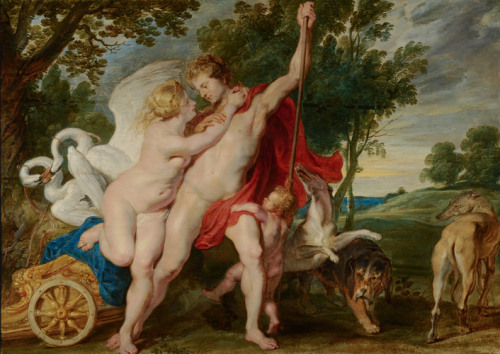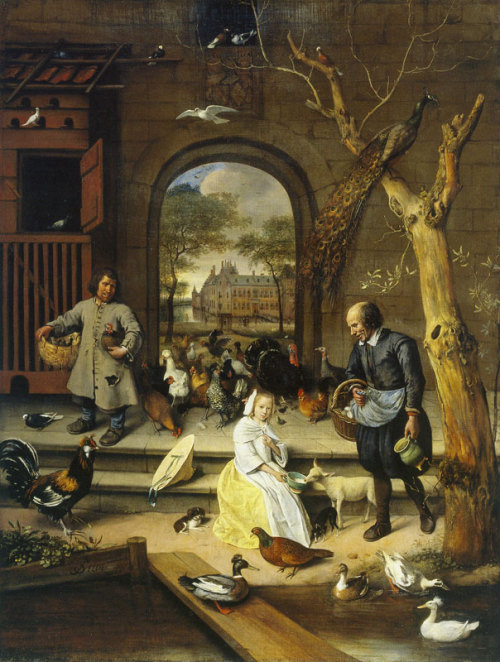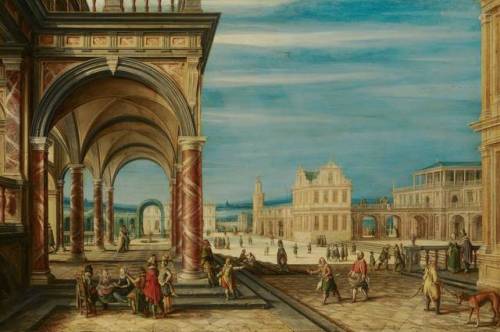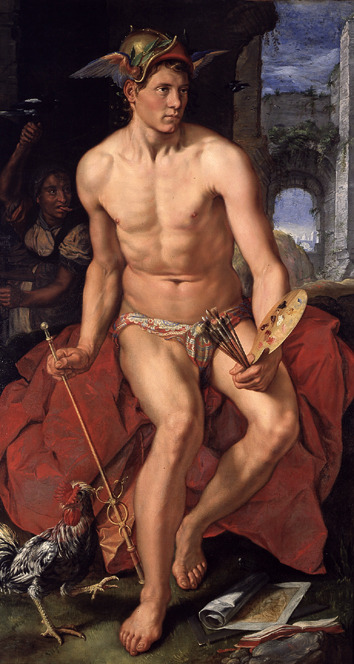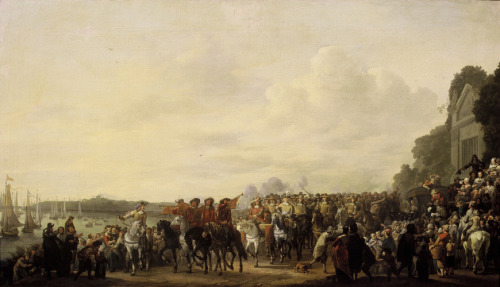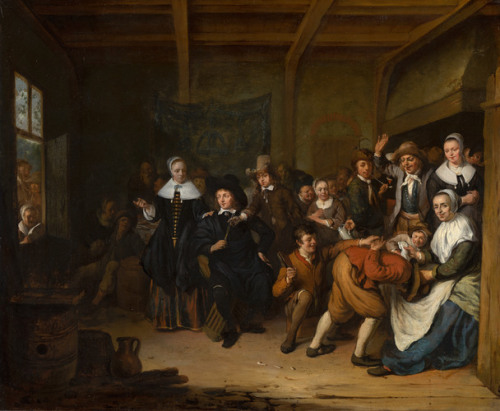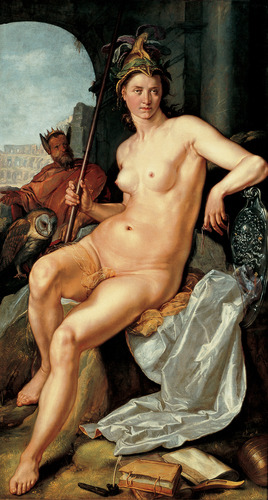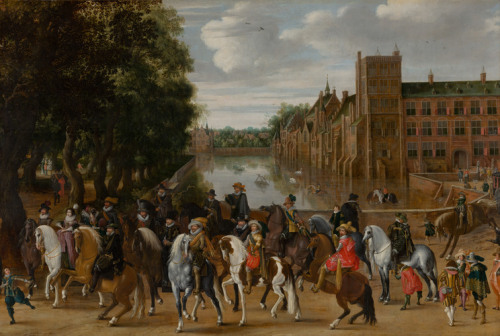#mauritshuis
Venus Trying to Restrain Adonis from Departing for the Hunt, Peter Paul Rubens, 1700,Mauritshuis Museum
Post link
Portrait of Jan III (1583-1638), Count of Nassau-Siegen, Anthony van Dyck,Mauritshuis Museum
Post link
Hendrik van Steenwijck II - A Square with Imaginary Buildings
1614
oil on copper
Mauritshuis, The Hague
Post link
Cornelis Troost - Harlequin, Magician and Barber: the Deceived Rivals
1738
Pastel and brush in gouache on paper
Post link
Jan Brueghel the Elder and Hans Rottenhammer - The Rest on the Flight into Egypt
c. 1595
oil on coper
Post link
Charles II (1630-1685) stopping at the Estate of Wema on the Rotte on his Journey from Rotterdam to The Hague, 25 May 1660, Johannes Lingelbach,Mauritshuis Museum
Post link
Travellers Resting (The Rest on the Flight into Egypt?), Rembrandt van Rijn, 1630,Mauritshuis Museum
Post link
Self-Portrait as a Hunter, Arie de Vois, 1660,Mauritshuis Museum
A hunter and his dog are sitting at the foot of a tree. The man is nonchalantly holding a dead partridge and a hunting rifle. Though it may appear an innocent scene, for Dutch seventeenth-century viewers it had erotic connotations. The words ‘jagen’ (to hunt) and ‘vogelen’ (to catch birds) also referred to courting and making love. The hunter – in imaginary clothing – is a self-portrait of the Leiden ‘fijnschilder’, or fine painter, Arie de Vois. His paintings are distinguished from the work of the other Leiden fijnschilders by their velvety appearance.
Post link
The Princes of Orange and their Families on Horseback, Riding Out from The Buitenhof, The Hague, Pauwels van Hillegaert, 1622,Mauritshuis Museum
Here, the Oranges and members of their family are portrayed riding through The Hague. The painting was probably made by Van Hillegaert, an Amsterdam painter of battles and portraits of horsemen. From the west, we are looking across the Hofvijver lake with the tree-lined Lange Vijverberg on the left and the Binnenhof buildings on the right. The Mauritshuis is not yet in the picture, as it was built some time later.
Post link
Venus Trying to Restrain Adonis from Departing for the Hunt, Peter Paul Rubens, 1700,Mauritshuis Museum
Post link
The Life of Man, Jan Steen, 1665,Mauritshuis Museum
The curtain is lifted to give us a clear view of an inn, where young and old are enjoying eating, drinking, playing and flirting. But for Jan Steen, it was not just about cheerful conviviality. His message is concealed in a small detail by the window. Up in the dark attic, a boy is blowing bubbles next to a skull. Although life is wonderful, eventually it will burst like a bubble.
Post link


